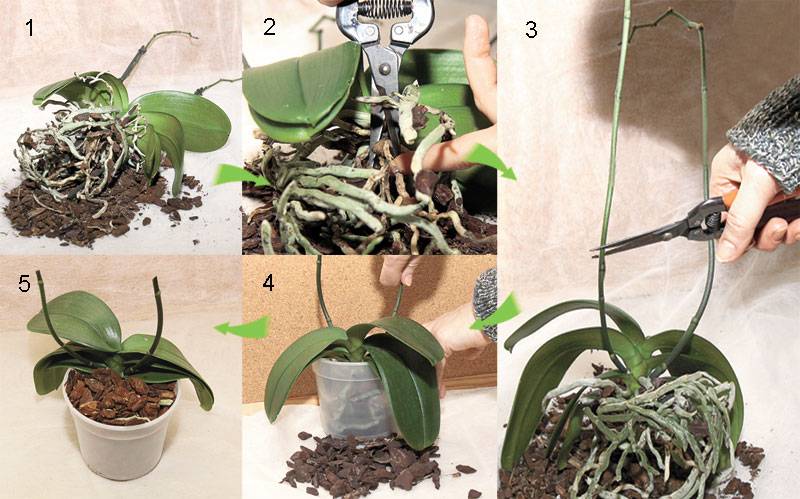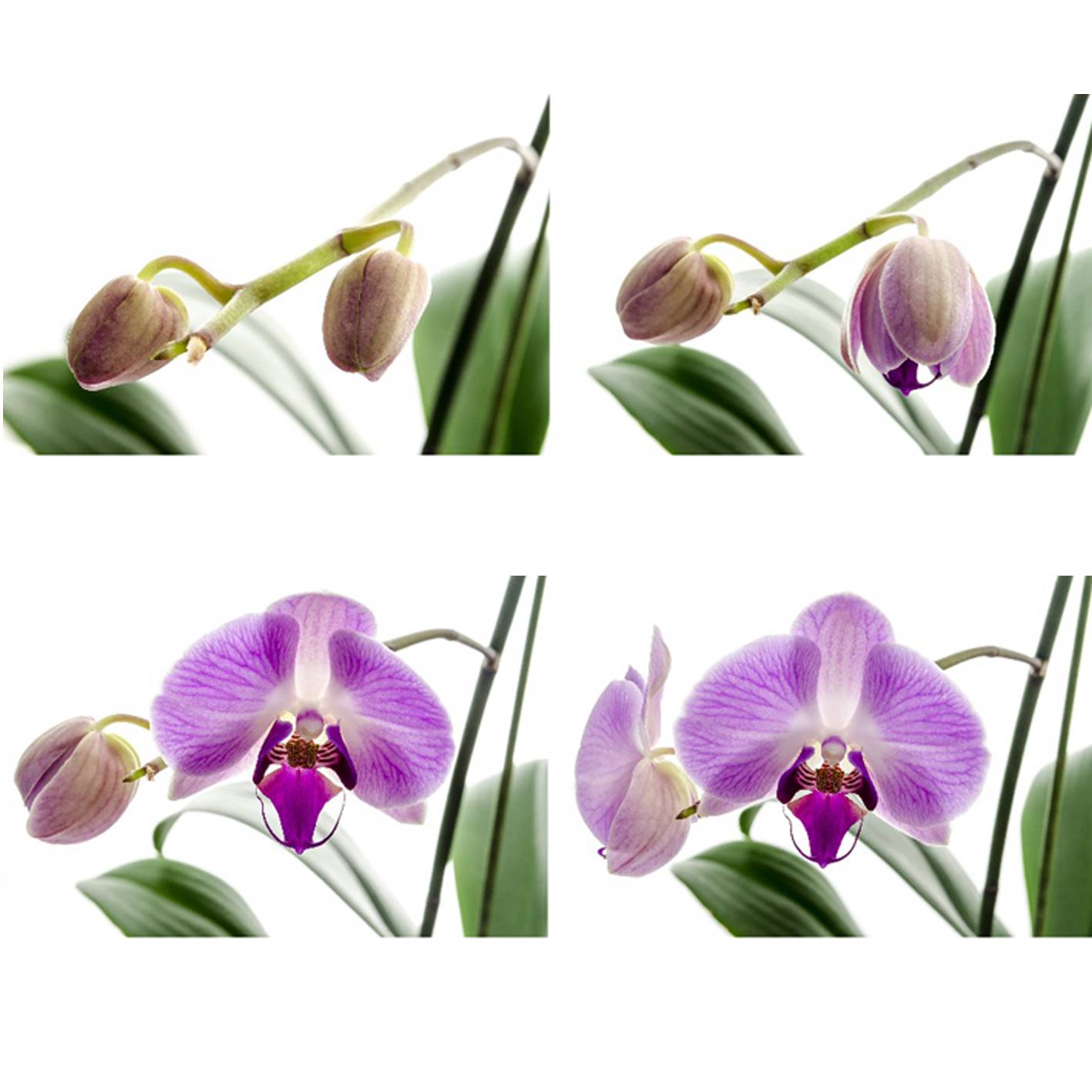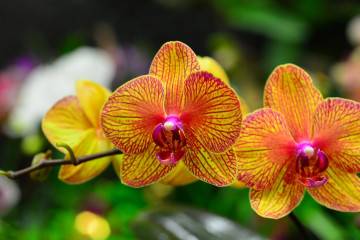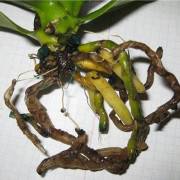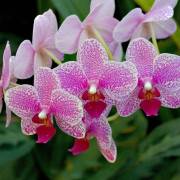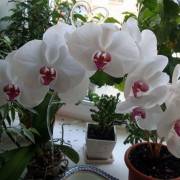Is it possible to transplant a blooming orchid: the number of times and the need for the procedure
Content:
Blooming orchid is a symbol of Asian culture, a healing and decorative flower. Poems and legends have been written about him since ancient times. The special structure of the flower allows you to grow it at home. Perfect as a decor. The scent and color will merge with the home collection of plants. See below if you can transplant a blooming orchid.
Is it possible to transplant an orchid during flowering
Having found diseased leaves, stems or pests on a plant, you should immediately start transplanting it. This will limit the spread of parasites through the flower and save neighboring plants from infection. Even during the flowering period, it should be transplanted. Phalaenopsis transplant process is complicated. For safety, a diseased orchid should be rearranged separately from other specimens. You will have to be patient, but the result is worth it.
An orchid is transplanted for several reasons:
- rotting roots;
- pests hit the flower;
- the roots do not have enough space in the pot;
- yellowed leaves;
- poor quality soil;
- does not bloom.
Putrefaction
The root system deteriorates from late autumn to early spring. During this period, the sun's rays are not so active, the roots and leaves lack chloroform, and excess moisture accumulates on the stems and soil.
A blooming orchid has a peculiarity: when enough sunlight hits the leaves, they signal the beginning of moisture penetration into the roots, that is, a sponge effect occurs. If there is little light, then the water stays in place and is not absorbed. With moderate watering, rotting can be prevented in any season.
In cloudy times of the year, it is better to install lamps above the pot. They will create additional lighting, and all processes in the flower will resume.
Pests
Common pests include:
- aphid;
- worms;
- thrips;
- spider mite.
The orchid mesmerizes with its beauty during flowering. It can be spoiled by aphids - a small insect that covers the surface of the plant by 80%. The size of the parasite is 1 mm or less. Aphids reproduce within a few days. The millionth offspring mercilessly eats all the components of the flower. Pest control begins immediately using chemicals. Processing should be carried out 1 time with an interval of 2-3 days. Abundant watering and feeding with vitamins during this period are very important.
Mealybug blocks all processes in the plant. Infection starts from the stem and penetrates into the roots. In the fight, treatment with an antiseptic and chemical solutions can help. They can be found in specialized stores.
Spider mites are not so dangerous, the main rule in the fight against them is daily wet cleaning of the leaves. We are talking about spraying, as well as adding vitamins to the soil.
There is a lot of harm from thrips, they feed on orchid juices. They are able to dry out the plant within several weeks. The consequences of the appearance of parasites are wilting and death of the flower. The appearance of stickiness on the leaves and petals, their twisting and the formation of pimples are the first harbingers of the pest.
Root system problems
The root problem is not immediately apparent. A blooming orchid at the initial stage of the disease may not show signs. The buds bloom in due time, the leaves look healthy. Even in a transparent pot, this is not noticeable. For prevention, it is necessary to transplant more often and consider all areas.
Symptoms of root rot:
- slime;
- brown-black color;
- specific smell.
The transplant process at home
Can an orchid be transplanted during flowering? The answer of the experts is yes The transplant should be carried out in case of special need. In addition, the nutrient soil needs to be renewed periodically.
Step-by-step transplant of a blooming orchid at home:
- Preparation of tools and materials: substrate, transparent pot, knife, secateurs, fixing stick.
- To remove a flower from a pot, you need to squeeze the root stems and gently pull it out.
- Remove the old soil from the roots and rinse them under running water.
- Examine the condition of the root system and assess the chances of development. If pests or rot are found, treat with an insecticide solution. Cut dry and rotten roots with disinfected scissors. Sprinkle with charcoal.
- To transplant a home orchid into a new pot, rinse it with a solution of potassium permanganate. Then fill 3 cm with expanded clay or other material for drainage.
- Spread out the roots in a new pot. Add soil gradually. As a result, all roots must be hidden under the bark. It is not scary if several processes peek out above the surface.
- The final step is to fix the stem and flowering buds. Wooden skewers are used for support.
Watering
Watering should be taken seriously. This is necessary for normal development and growth.
Watering rules:
- the best time for watering is in the morning;
- water needs settled. Hardness can be reduced by adding oxalic acid: 0.5 teaspoon per 3 liters. Must be prepared the day before transplanting. Hard water can damage the roots;
- water temperature 30-35 ° С;
- during the flowering period, it is better to spray the flower more often;
- Warm dousing is carried out 2 times a month. It boosts immunity and protects against disease;
- after transplanting, watering occurs with the addition of dressings and vitamins;
- when spraying, do not allow water to enter the leaf axils;
- do not moisturize the leaves in direct sunlight. The flower can get burned.
Choice of capacity
A transplant pot is used transparent. The root system needs constant sunlight. The birthplace of phalaenopsis is considered to be crevices, mountainous areas, cracks in trees. Consequently, there is a constant process of photosynthesis in the roots. The container needs a small height and 2 times the width. The bottom should have large water drain holes. Photosynthesis and good ventilation of the roots are a priority.
Transplant soil
For transplantation, a special soil is used. You can buy it at their respective stores. For DIY cooking, mix the following ingredients in equal proportions:
- pine bark fraction;
- sphagnum moss;
- expanded clay.
Orchid bloom
You can wait for an orchid to bloom for a long time, so you need to be patient. After transplanting, flowers appear in a couple of years. Petals (6 pcs.) That appear on the stem signal the beginning of flowering. In the absence of flowers for 1.5 years, there are ways to stimulate flowering.Proper care affects how often the orchid blooms.
Temperature drop
Orchid is a heat-loving flower. When the night temperature drops, a difference of no more than 5 ° can be maintained. If you reduce the night temperature by another 5 °, then soon the buds will shine on the stems.
A flowerpot with a flower in the summer at night is put out the window. Thus, at lunchtime, he receives the maximum amount of sunlight, and at night - he is tempered. Contrasting temperature drops stimulate the plant to bloom, get rid of pests, saturate with oxygen, and increase immunity.
Watering intermittently
This type of stimulation is suitable for orchids like wanda, phalaenopsis, etc. This trick will help wake up a capricious orchid in a couple of months. The main rule is to increase the intervals between waterings. Spraying, feeding and moisturizing the vitamin should also be cut in half.
After the appearance of the long-awaited flowers, you can go to normal mode. If the peduncle appeared in spring or autumn, additional lighting must be installed.
How often it blooms
Orchid growth stages:
- After transplanting, the flower begins to grow immediately. The strengthening of the root system takes six months.
- Leaves and stems develop next. The healthy appearance of the flower indicates a correct transplant.
- After the formation of leaves, buds begin to form. Their quality affects flowering.
The orchid blooms once a year. During this period, you should pay maximum attention to the plant: regularly apply fertilizers with potassium, magnesium, phosphorus. Don't overdo it with nitrogen.
How long
The flowering period per year is 2-3 months, but this does not apply to all varieties. Different types of orchids have their own characteristics, which are associated with habitat conditions.
Influencing factors:
- temperature;
- sunlight;
- air humidity;
- watering.
The orchid blooms in a pot for at least 3-4 weeks. And so 2-3 times per season. Old flowers fall off and new ones appear in their place. In summer, there are fewer buds than in spring or autumn. The flower does not tolerate heat well. Healthy plants produce more and more flowers than diseased plants. Top dressing during this period must be strictly controlled. The optimum temperature for normal development is 25 ° C.
Further care of the flower
No special care is required after the transplant. The only thing is to shade the upper part of the flower from the sunny color within a week.
Watering is done immediately. You need boiled water with the addition of calcium and magnesium. The whole pot is immersed in it for 40 minutes. Thus, the soil is saturated with nutrients. The next moisturizing procedure should be carried out no earlier than 2 weeks later. Top dressing is applied after 3 weeks.
In any house or apartment there is a place for an orchid. It will delight not only the owners, but also the guests with its beauty and amazing aroma. With proper care, it blooms for a long time and beautifully. In the direction of feng shui, the orchid is also used. Not cut, but a room representative is perfect. Belonging it to noble plants has a beneficial effect on the atmosphere in the house. Able to activate zones in a positive direction. In an ancient Japanese legend, there is a belief that the orchid, having the name of the feminine gender, is considered a masculine flower. Combining 2 elements, it is suitable for balance in the family.
Observing the general rules for caring for a flowering orchid during transplantation, you can protect it from diseases and pests.The main thing is to monitor the state of the root system. A timely moistened substrate is a guideline for subsequent actions. Most store-bought orchid varieties are hybrid. They are adapted to the environment, weather and pests. Therefore, there should be no problems in transplanting or growing.
